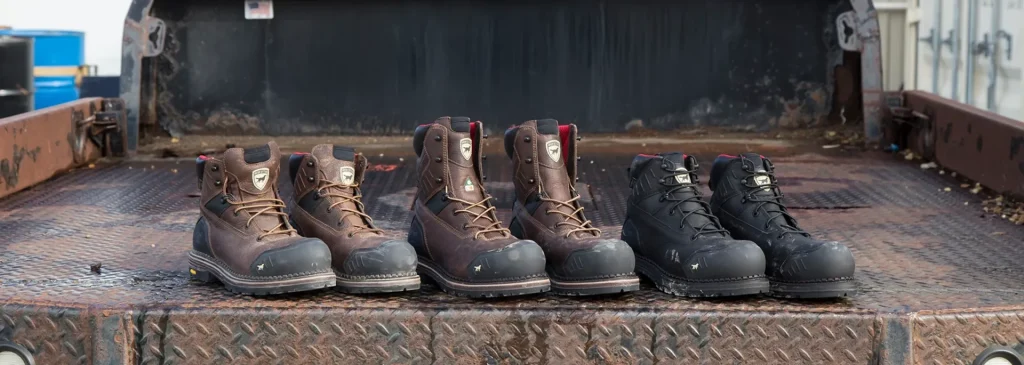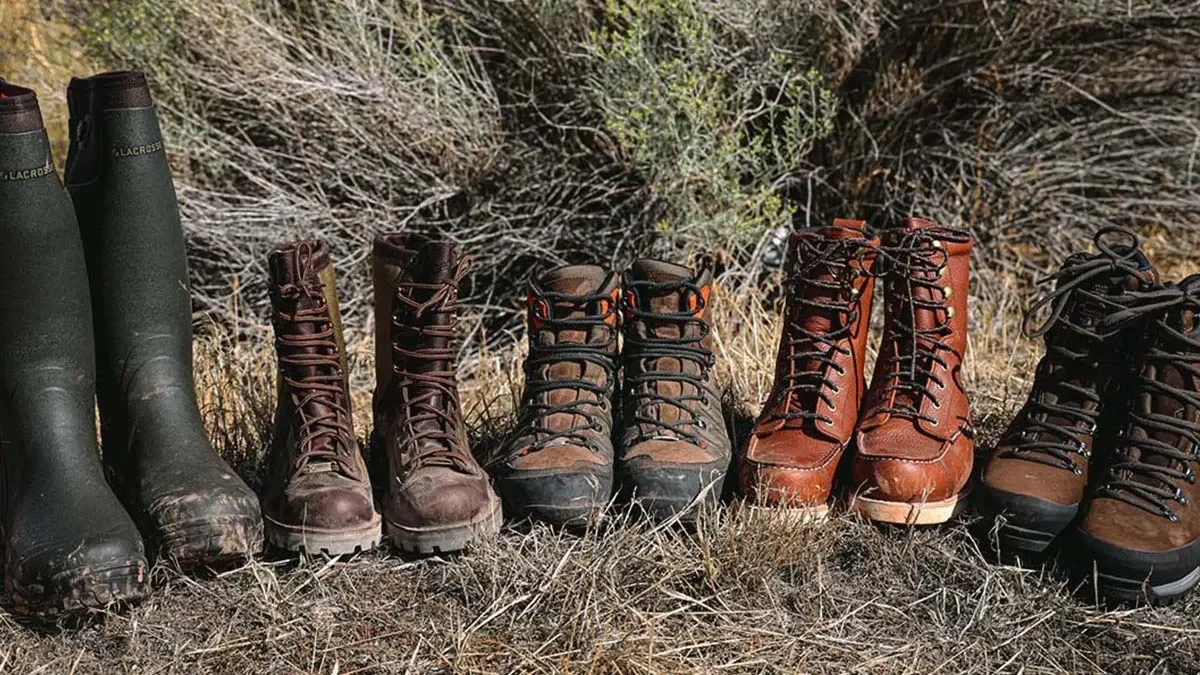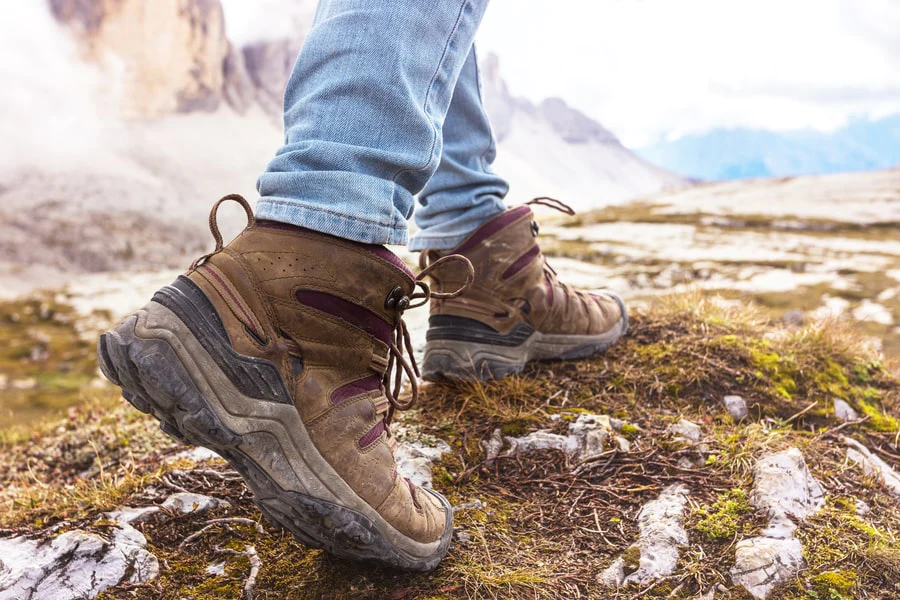Have you ever wondered, “What is the difference between Work Boots and Hunting Boots?” Well, look no further! In the world of footwear, these two types of boots serve distinct purposes, each tailored to meet specific needs.
Whether navigating a construction site or trekking through the wilderness in pursuit of game, understanding the key disparities between Work Boots and Hunting Boots is crucial.
What is a Work Boot?
You might discover the need for donning work boots in a new workplace. These boots are vital to your job, just like any other equipment.
They offer safeguarding for your feet through durable steel toe caps and heavy leather. Ensuring warmth and dryness, they prove essential in varying work conditions. With their robust rubber soles and well-designed treads, these boots provide stability on any surface you encounter during work.
Work boots are crafted to endure the demands of labor. Consider them a reliable tool to accomplish your tasks, offering your feet continual comfort, protection, and utility throughout the day.
What is a Hunting Boot?
I have relatives who embark on annual journeys to the dense forests of Washington. They are engaged in deer hunting and stay in a rustic cabin without running water or electricity. Their preparation includes packing essentials, particularly reliable hunting clothing and boots.
Hunting boots play a crucial role in their attire as they navigate the landscape for extended periods, patiently awaiting the appearance of their prey. A quality pair of hunting boots ensures dry and protected feet, capable of traversing diverse terrains throughout the day.
These boots often extend sufficiently to shield shins from small creatures and insects known to nibble at exposed human legs. Crafted from lightweight, water-resistant materials and featuring flexible yet sturdy soles, hunting boots contribute significantly to a successful hunting expedition when chosen wisely.
Work boots vs hunting boots when it comes to durability
Work Boots Durability
Investing in quality work boots can yield a footwear companion lasting 12 to 24 months, given proper care and attention.
Opting for boots that allow repairs and sole replacements can extend their lifespan, potentially over decades.
While work boots on a lower budget may have shorter lifespans, diligent maintenance and professional repairs can significantly prolong their usability, even in demanding work environments.
Similarly, hunting boots can endure for years with adequate care like their work counterparts. The option of replaceable soles and the choice between leather and synthetic materials can influence the longevity of hunting boots, making them reliable companions throughout the seasons.

Hunting boots Durability
Certain hunting boots are crafted solely from rubber, offering prolonged durability. However, the risk of dry rot can compromise their longevity, potentially reducing their lifespan.
Conducting thorough research to understand and implement proper care practices is essential for extending the life of your hunting boots.
With adequate care, a quality pair of hunting boots, regardless of the material, should endure for a decade or more, providing reliable support and protection throughout your outdoor pursuits.
Hunting boots vs work boots safety features
Work boots’ safety features
Work boots often have safety features to protect the foot in diverse work conditions. One notable safeguard is the inclusion of safety toe caps, available in various materials such as composite, alloy, or steel. F
for instance, steel toe caps shield toes from the impact of heavy objects, providing a sturdy surface for tasks like moving or positioning materials.
High heels on work boots serve as another valuable protection feature. In scenarios like firefighting, these heels prevent slipping on ladder rungs, enhancing safety during challenging situations.
This feature is equally beneficial for occupations such as tree climbers, loggers, and linemen, offering stability and preventing accidents when navigating various surfaces.
Hunting boot’s safety features
Hunting boots prioritize safety during extended outdoor activities. For those traversing rugged terrains for extended periods, full-grain leather hunting boots are crucial in preventing foot fatigue, enabling secure hiking through challenging environments like sticker bushes, brush, grass, and sticks.
Designed to reach the middle of your shin, these boots offer protection against biting critters, small insects or creatures encountered along the way.
Cold-weather hunting boots feature specialized zero-degree insulation, ensuring toes and feet remain safeguarded from frostbite during chilly conditions.
Additionally, most hunting boots incorporate water-resistant elements, maintaining dry and warm feet, a vital aspect for enduring prolonged exposure to the elements during outdoor adventures.
Work boots vs hunting boots in terms of price
What do work boots cost?
Currently, Walmart offers basic work boots priced under $80. While these boots may not boast top-tier quality, they are designed for a 6-12 months serviceable lifespan. Though comfort might be a compromise, they are reliable in standard working conditions.
Alternatively, investing a few hundred dollars in a pricier pair of work boots guarantees extended durability, superior material, and construction quality.
Such boots provide consistent comfort and safety throughout your workday, offering a worthwhile upgrade for those willing to make a more substantial investment.

What do hunting boots cost?
Hunting boots exhibit a wide price range, spanning from approximately $100 to $600, and the significant price difference is attributed to variations in construction quality, materials used, and overall durability. While more affordable options may keep your feet dry and offer basic protection, they often need to catch up to heavy usage.
They may cause discomfort during prolonged hunting trips. Investing in a solid pair of hunting boots priced between a couple hundred to $600 ensures longevity and, with proper maintenance, offers years of reliable use.
It’s essential to acknowledge that maintaining any leather boot involves annual expenses, potentially adding up to a couple of thousand dollars over a decade or more.
Some prefer to cherish and continually repair their beloved boots rather than purchase new ones. Investing that much in a single pair of boots ultimately depends on personal preferences and priorities.
Do leather work boots make good hunting boots?
Indeed, hunting and work boots serve distinct purposes due to their design differences. Hunting boots are crafted to be lightweight, facilitating comfortable walking over extended distances, making them suitable for covering many miles in outdoor environments.
On the contrary, work boots typically feature a heavier build, equipped with thick rubber soles, and often incorporate safety elements such as steel toe caps. While work boots excel in providing protection in industrial or construction settings, they may offer different comfort during prolonged walks in the woods.
The added weight, steel toe caps, and overall design may make them less conducive for extended outdoor activities.
Conversely, hunting boots, tailored for walking miles in varying terrains, prioritize lightweight construction and comfort, making them more suitable for outdoor enthusiasts covering substantial distances during hunting trips.
Each type of boot caters to specific needs, emphasizing the importance of choosing the right footwear for the intended activity.
Ending Thoughts
Boots designed for work and those tailored for hunting serve distinct purposes and shouldn’t be swapped casually. Understanding the specific requirements for our feet based on the task is crucial before investing in boots.
Typically, work boots boast a robust, rigid construction, prioritizing toe protection. On the other hand, hunting boots prioritize a lighter, more flexible design, allowing your feet the freedom to move naturally during extended hikes.
Ensuring the longevity of your footwear is possible with proper maintenance. Occasionally, investing a bit more in a pair of work or hunting boots can be wise if you aim to enjoy their durability over an extended period.

